Dill is a versatile herb enjoyed worldwide for its delicious flavor in pickles and sauces. Unfortunately, if you’re not careful, you can accidentally kill your dill plants when harvesting the leaves. Learn how to harvest dill without killing the plant for plenty of fresh dill all summer!
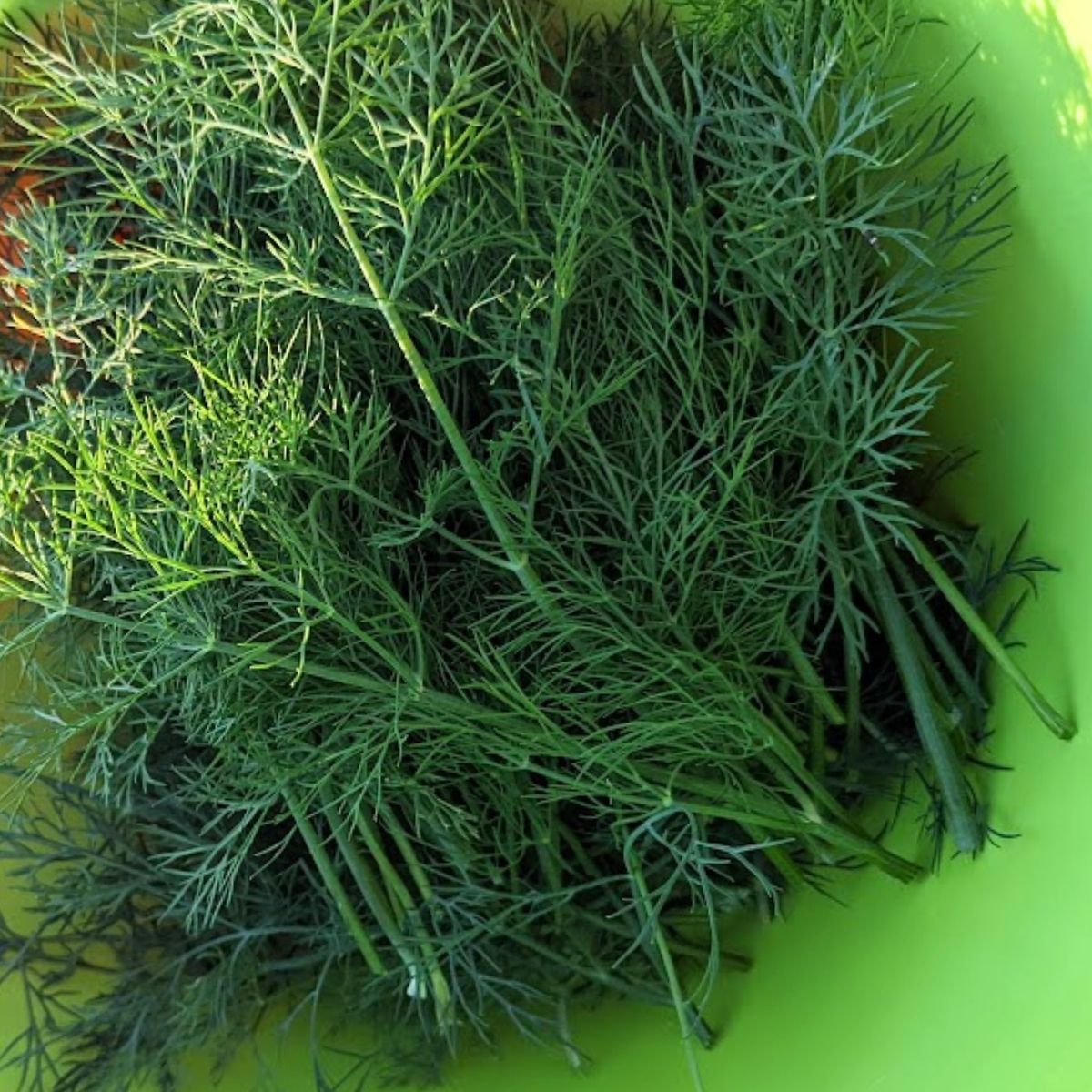
This aromatic herb is called dill weed for a reason. It’s easy to grow and can become invasive if you let the flowers go to seed. The dill seeds will spread far and wide, often well beyond your herb garden.
Depending on where you live, dill may grow as an annual plant or even a perennial if you live in a warm climate. Knowing how to harvest dill properly is important regardless of where you live.
There are many reasons to keep your dill plants alive until the end of the growing season, and the following tips will make it easy to harvest all the dill you’ll need without harming the plant.
Which Parts of the Dill Plant do you Harvest?
Although the entire dill plant is edible (leaves, stems, flowers, seeds), this carrot relative is typically grown for its leaves and seeds.
- Leaves: The leaves can be added to salad dressings, dill pickles, and various other recipes for a mild dill flavor. The dried leaves can also be used as a substitute for fresh dill in your favorite recipes.
- Seeds: You’ll often see dill seeds used to make pickle brine, as they have a much stronger flavor than the leaves.
- Flowers: Sometimes creative home cooks harvest the dill flowers to use instead of the leaves. They add a beautiful color and fresh dill flavor to your jars of pickles.
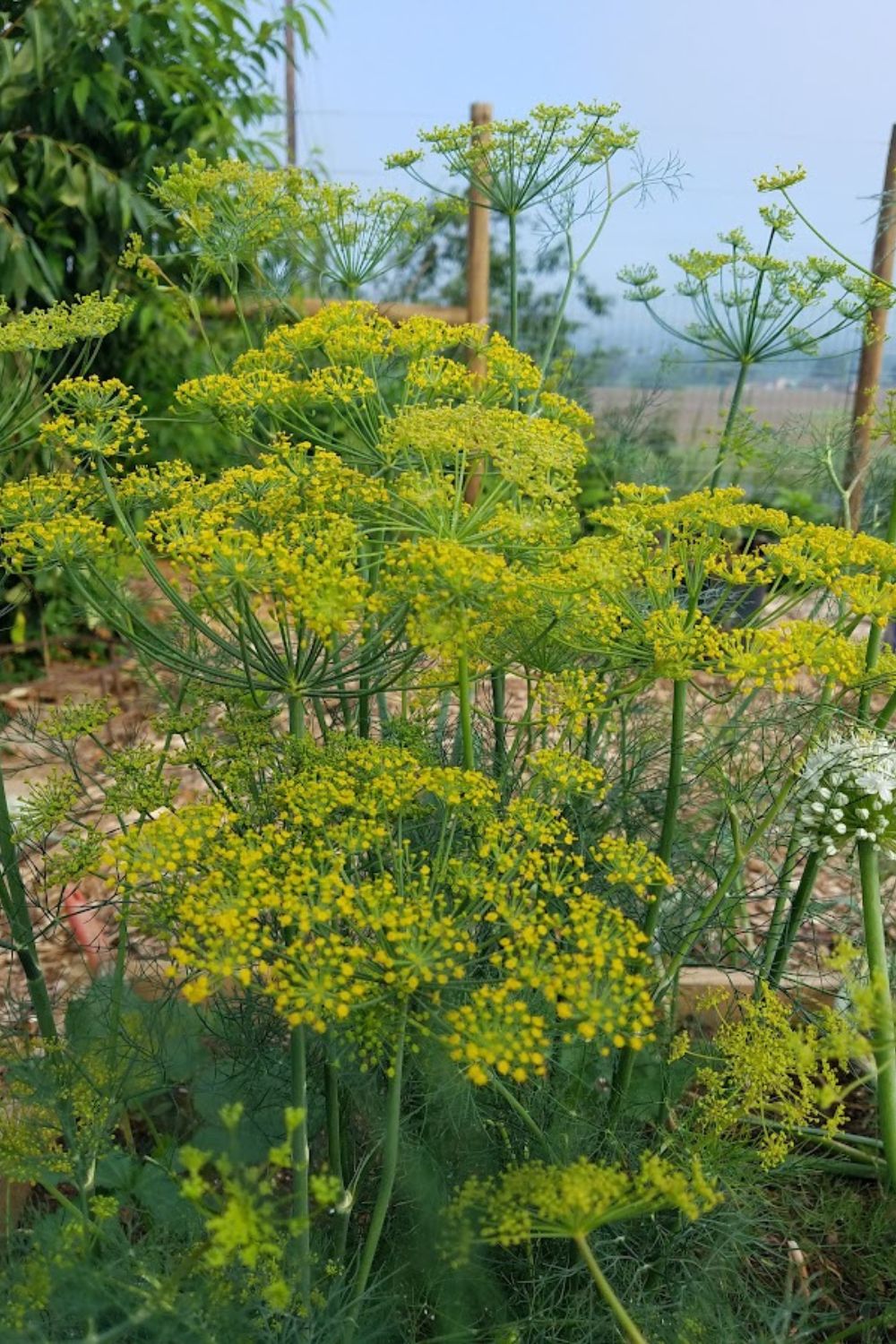
When to Harvest Dill
Timing is key to ensure you get the most flavor and nutrients out of your dill plant. The best time to harvest your dill depends on your intended use.
For fresh dill: Wait for your first harvest until the leaves are large enough for use. This is typically around six to eight weeks after planting or when the plants reach approximately 6 inches or taller. They should have at least a handful of leaves.
To harvest the seeds: Wait until the flowers have turned brown and the seeds have fully developed (approximately 12 weeks after planting). Tie a paper bag over the flower heads to collect the seeds as they fall.
Harvesting the seeds without killing the plant is easy as the plant naturally releases them after flowering. However, it’s harder to harvest fresh dill as you can stress the plant too much and cause it to die. Fortunately, it’s easy to get plenty of dill without harming the plant by following the tips below.
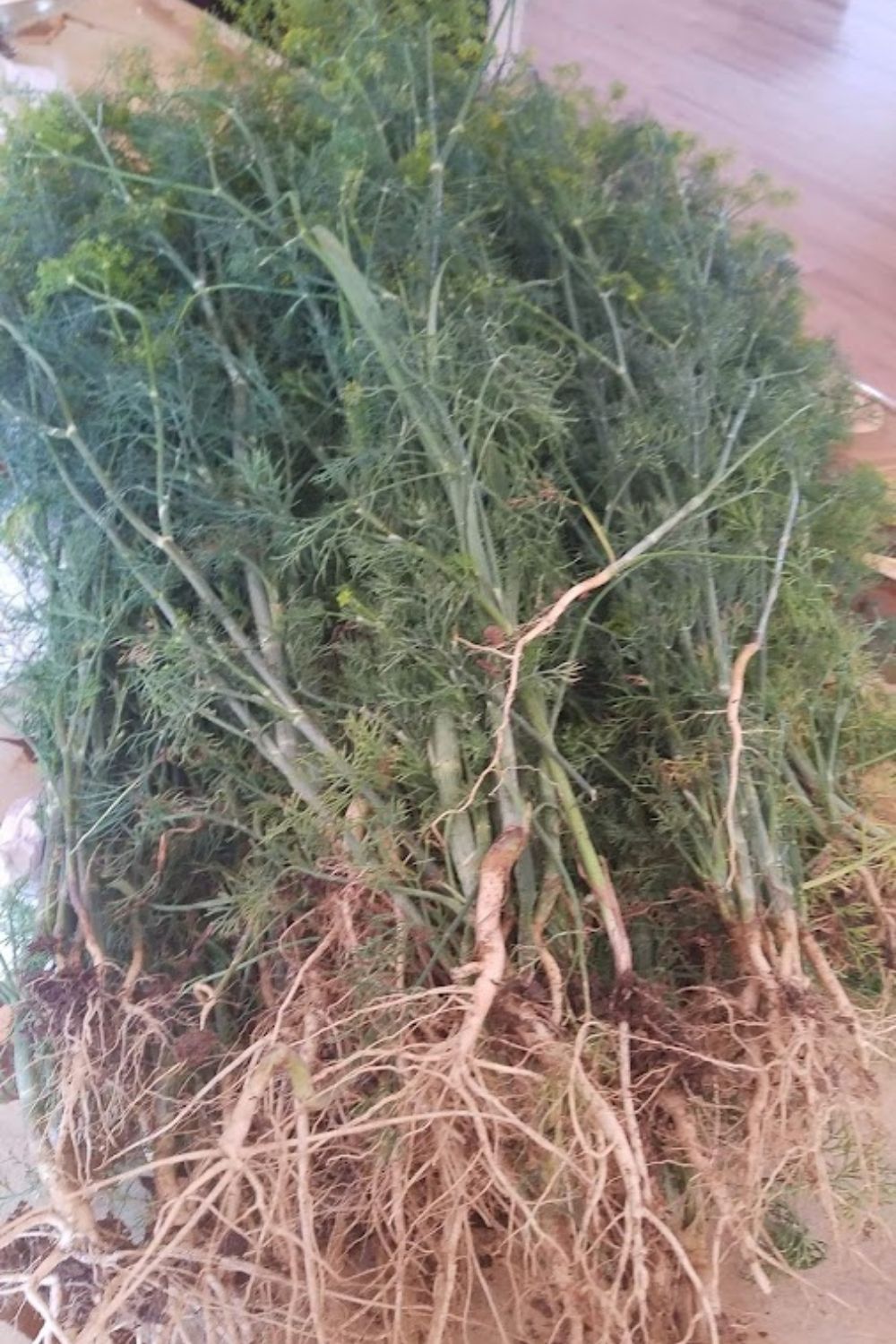
Sometimes, dill can take over your garden, and then you may need to pull most of it out of the ground. That is what we did last summer.
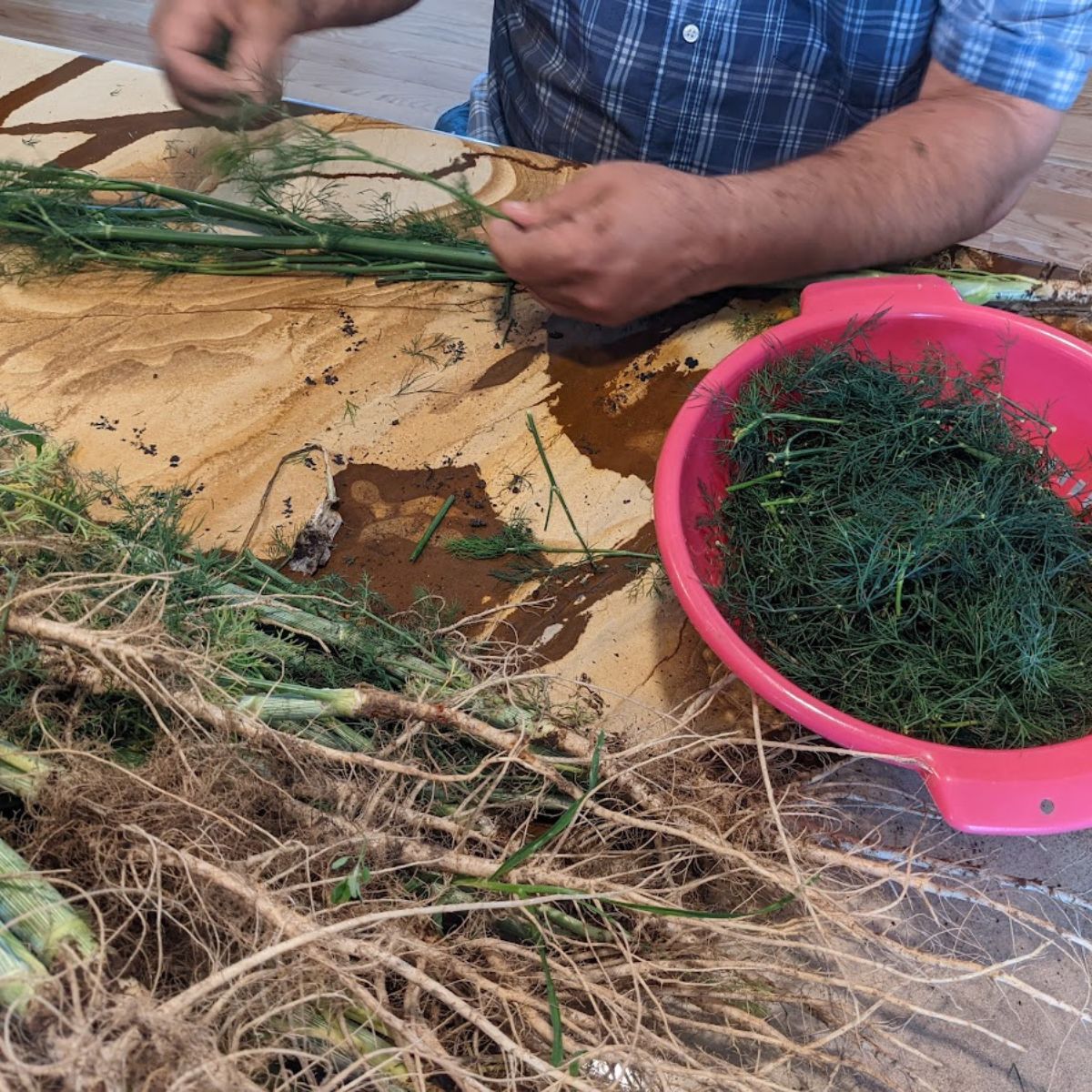
Learn more about drying herbs (including dill).
Essential Tools for Harvesting Dill
You’ll need a few essential tools to harvest your dill leaves and flowers properly.
- Sharp garden shears: Use clean shears to avoid spreading diseases among your plants.
- Gloves: These are optional, but fresh dill can cause irritation in some sensitive people.
- Basket or container: This will make it easier to carry your harvest and prevent any damage to the delicate leaves.
- Paper towels or cloth: You can keep freshly harvested dill flower heads soft and tender by wrapping them in a damp paper towel.
- Airtight container: Unless you plan to use the fresh leaves right away, store them in a glass jar, bag, or container to keep them fresh.
To harvest dill seeds, you’ll also want a paper bag or plastic bag, some string, and a glass jar to store your dried seeds.
The Right Technique: How to Harvest Dill Without Killing the Plant
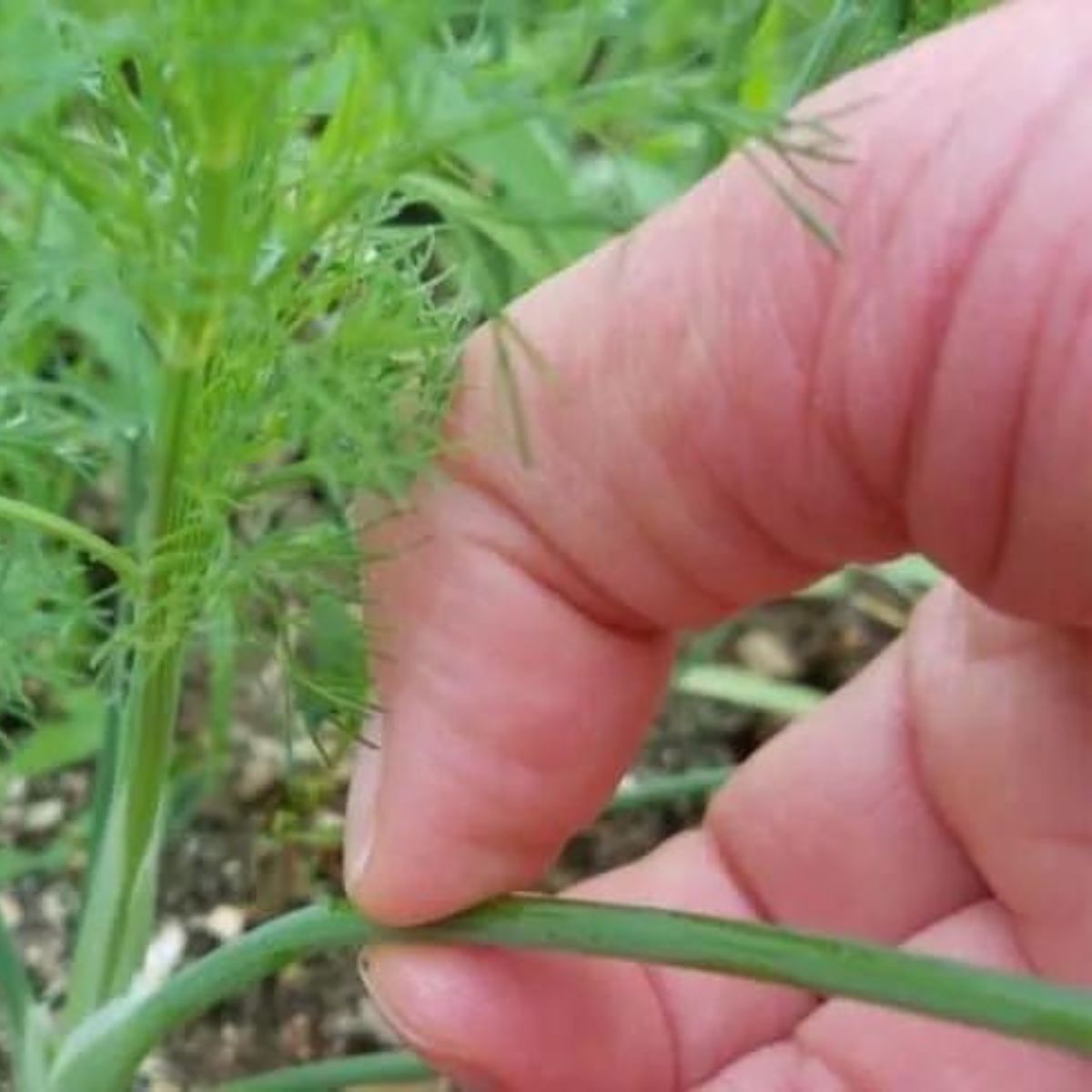
Like your favorite culinary herbs like parsley, fresh basil, and mint, you can easily harvest dill throughout the season. If you only take a small amount of dill at a time, your plant will continue to thrive and produce new growth.
If you plan on harvesting the leaves, it’s best to do it in the morning after the dew has dried.
The leaves have the best flavor right before the flowers open, as the flavor oils are the most concentrated.
The best method to harvest dill without damaging the plant is to make clean cuts at the base of the leaf stems right along the main stem using a sharp pair of scissors or shears. These cuts will heal quickly and prevent damage to the remaining plant. Hand pinching works too if you only need a few sprigs.
When harvesting dill, only take what you need. Cutting too much at once can cause stress to the plant and reduce its overall health. Instead, focus on harvesting the mature leaves first, leaving the younger growth to mature.
When harvesting, leave between one-quarter to one-third of the plant intact. This will allow the plant to grow and produce new leaves and stems for future harvests.
Be sure to water the plant well to help it recover from the stress of harvesting.
Caring for Your Dill Plant
Although dill is quite forgiving, there are a few tricks to keep your plant happy and healthy throughout the growing season.
- Full sun: Dill loves the sun, so plant in a location with direct sunlight and good drainage.
- Water just enough: Too much water can cause root rot and other diseases. Dill needs 1-2 inches of water per week after germination.
- Give it space: You’ll get a better harvest if you plant your dill approximately one foot apart.
- Prune: Remove yellowing or damaged leaves to avoid disease.
- Keep it dry: To avoid powdery mildew, water at the base of the plant, not the leaves.
- Tie or stake: Your dill plant’s tall, spindly stems may fall over without support. Consider using bamboo stakes, a tomato cage, or twine to tie them to a nearby fence.
- Fertilize: To encourage healthy growth, fertilize your plant just once with a balanced fertilizer.
Learn more about growing dill, including what to plant with dill for a better harvest.
Oh, if you end up with a lot of dill, here are 6 ways to use dill.
FAQs
What part of a dill plant do you pick?
The entire plant is edible, so you can eat your fresh dill’s leaves, seeds, stems, and flowers. Most people eat the leaves, which can be harvested throughout the dill’s growing season.
Does dill continue to grow after harvest?
As long as you’re cautious and only harvest at most one-third of the plant’s leaves, you can harvest fresh dill from your plants throughout the growing season.
Will dill come back each year?
Dill is annual and it won’t come back from the same plant the following year. But, if you let your dill plants go to seed, those seeds will most likely germinate, and you’ll have more than enough dill seedlings.
Is it okay to let dill flower?
You certainly can let dill flower, but you should know a few things. First, the dill leaves will lose their flavor once the plant starts to flower. If you are growing dill for its feathery leaves, they will have a lot less flavor once those flower buds open.
Secondly, dill can quickly become invasive. Each of the seed heads usually contains several hundred seeds that can spread throughout your vegetable garden and neighborhood. This easy herb can quickly become a pest if not cared for properly.
It’s best to remove the flowers (and add them to your batch of dill pickles or salads) or collect the seeds by covering the mature flower heads with a paper bag. Plus, you’ll be able to save plenty of dill seeds for next year and enjoy some in the kitchen.
If you’ve been itching to harvest some dill from your plant, try these tips to get started! Just take what you need and come back for more fresh dill later.
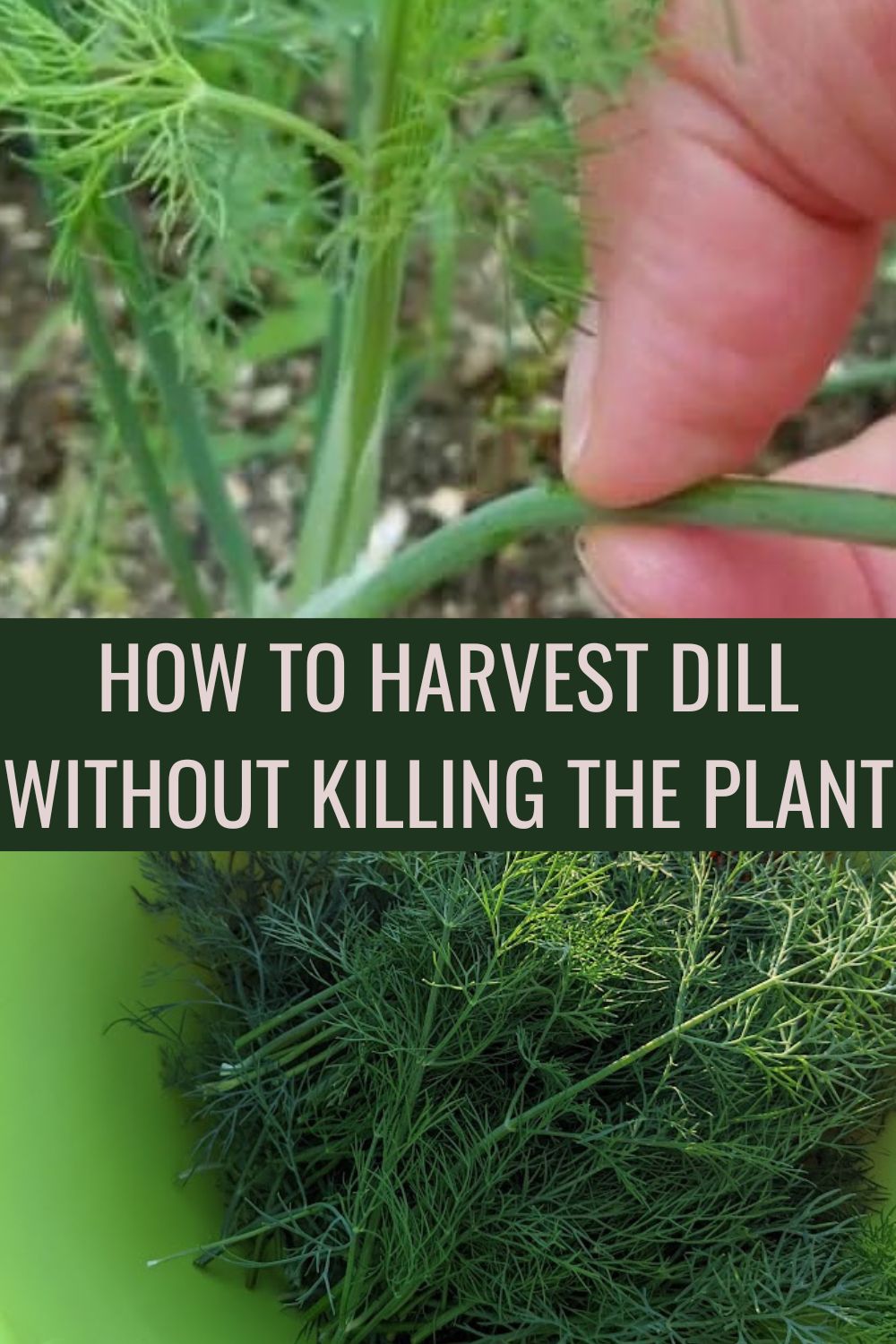



6 Best Companion Plants For Dill (And 3 To Avoid)
Sunday 2nd of April 2023
[…] But once it fully matures, dill can impede the growth of tomatoes, just like with other nightshades. If you would like to grow dill with tomatoes for the benefits it provides, make sure to keep a close watch and pull the dill out as soon as it shows signs of flowering. We had to pull pout our dill last summer for this exact reason (see my husband here preparing the dill we pulled for drying). […]
Is Dill An Herb Or A Vegetable? Plus 6 Delicious Ways To Use Dill
Sunday 2nd of April 2023
[…] To learn more about this interesting herb, be sure to read on as we unpack various components of it. And if you want to grow your own, here’s a guide to growing dill and tips on how to harvest dill. […]
How To Grow Dill And How To Save It For Winter
Sunday 2nd of April 2023
[…] Harvesting dill is as easy as it gets. Pick the tender leaves by pinching at the stem. You can use a pair of sharp scissors when you harvest a lot (for drying), but for everyday use, pinching them with your nails is the easiest. […]